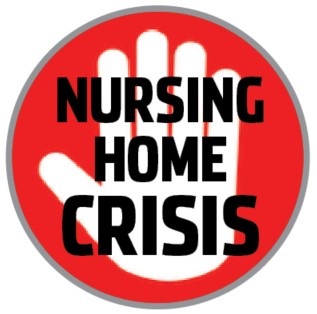

Story by BRIAN C. RITTMEYER and JULIA MARUCA
Oct. 29, 2023
Tools designed to help families researching a nursing home are obscure and often criticized by industry experts over their reliability and accuracy.
The Care Compare website maintained by the federal Centers for Medicare & Medicaid Services houses detailed data about nursing homes, provides quality-of-care ratings and flags homes for incidents of abuse.

• Staffing shortages leave nursing homes overwhelmed, patients vulnerable, experts say
• Some fear patient care threatened as staffing shortages plague nursing homes
• List of nursing homes cited for abuse can be incomplete, arbitrary, experts say
But it often is overlooked by families in their scramble to find a suitable home for a loved one.
Families often are under tight time constraints to find a nursing home for a relative on the verge of being discharged from a hospital, Pittsburgh elder care lawyer Michael Collis said.
“Usually families are like, ‘They’re discharging Mom tomorrow. We’ve got to find her (a nursing home.) The social worker says, ‘Here are three nursing homes that can take Mom right now, and that’s your choice,’ ” he said. “Or maybe there’s only one.”
This scramble sometimes ends in tragedy — their relative ends up in a home where they are neglected or abused, and the family seeks out Collis to file a lawsuit, he said.
“Then they carry that guilt … which is horrible for them,” said Collis, an attorney with the Pittsburgh office of Murray, Stone & Wilson law firm.
Detailed data about nursing homes is available through the Care Compare site. But none of the consumers and even some health care workers interviewed for this story were aware of the website.
Since 2008, the Centers for Medicare & Medicaid Services has used a five-star rating system to rank the quality of care at nursing home facilities. The star rating, according to the Care Compare website, is calculated using data from health inspections, staffing reports and a factor called “quality measures.” The latter is information related to patient conditions such as the percentage of patients who get pressure ulcers, how many falls occur or residents who are rehospitalized.
On the website, some nursing homes also are flagged for incidents of abuse or neglect with a red hand icon.
Annual state inspection reports called “surveys” are available on the site and contribute to the star ratings. They include documentation of incidents or shortcomings.
But for a layperson not familiar with the rating or flagging systems, the Care Compare site can be confusing, said Robert Daley, a partner with the Pittsburgh firm of Robert Peirce & Associates. He or she has little chance of determining why a facility is flagged, Daley said.
“Was it a one-off incident where an employee acted inappropriately and that employee was fired and everything is fine now, or is it a continuing course of conduct at the facility? You just can’t tell from the flag,” he said.
The site doesn’t clearly identify why the facility was flagged, what type of abuse is alleged or when it occurred, Daley said. Consumers should not be forced to dig into pages of inspection reports to gain insight into what went wrong at the facility, he said.
There is some correlation between homes with low star ratings and abuse, but it’s not true in every case, said Ryan Duty, an attorney with the Pittsburgh office of the Senior Justice Law Firm. Issues can arise even in highly rated homes, he said.
Still, Duty said the Care Compare site is “better than nothing.”
“It could be better in terms of transparency and explaining how they come to their findings of what constitutes abuse,” he said. “To me, a lot of it is based on their past inspection results. It may be one specific, particular egregious incident, or it may be many, many incidents occurring at the same time.”
Margaret Barajas, the state’s long-term care ombudsman, works with hundreds of paid and volunteer ombudsmen across the state to advocate for nursing home residents. She said the star rating system doesn’t always represent the home’s environment.
“A facility may have a very high star rating, which comes from the Centers for Medicare & Medicaid Services, based on delivery of the clinical aspect of care: Are you providing meds on time? Are you adhering to all these other regulations?” she said. “That does not translate in all cases to a home-like environment and loving care.”
The nursing home industry has opposed the star rating and abuse flagging systems.
The abuse flag icon, in particular, doesn’t tell the complete story, said Zachary Shamberg, president and CEO of the Pennsylvania Health Care Association, which represents nursing homes across the state.
Limited information is made available, he said, which leaves the public to interpret ratings and tags on their own.
“(Industry representatives) don’t feel that it fairly captures what’s really going on in the nursing home, and, in some respects, they may have a point,” Daley said.
Families should ask questions of homes with one- or two-star ratings, Daley said. Staffing should be a major component of that discussion, he said.
“The vast majority of caretakers in facilities are hardworking, good people trying to do the best they can,” he said. “If you put them under a lie detector, 90% to 95% of them are going to tell you there’s not enough people there to do the job.”
Brian C. Rittmeyer and Julia Maruca are Tribune-Review staff writers. You can contact Brian at brittmeyer@triblive.com and Julia at jmaruca@triblive.com.